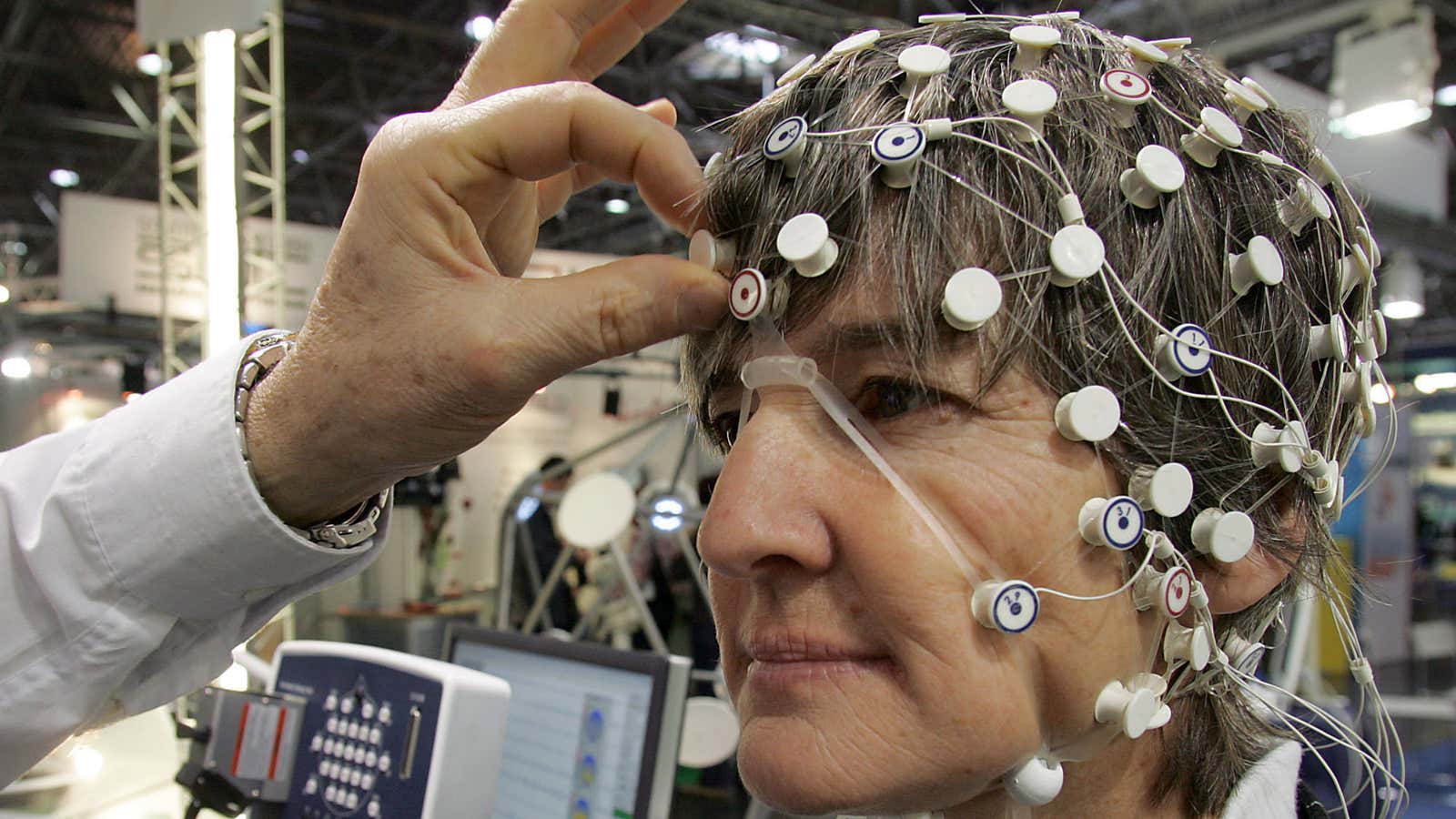A group of biomedical engineers at the University of Minnesota have successfully completed an experiment in which men and women controlled a small quad-copter with their minds. In a paper published yesterday in the open-access Journal of Neural Engineering, the researchers explained how “subjects were able to quickly, accurately and continuously pursue a series of foam ring targets and pass through them in a real-world environment using only their ‘thoughts’.”

For the experiment, two men and three women between the ages of 21 and 28 were fitted with 64-electrode electroencephalogram (EEG) caps that monitor brain activity. EEGs are a standard medical procedure in neurology (as in the picture above). They’re generally used to help diagnose epilepsy and other brain disorders. Researchers fed the EEG data into a computer to establish a baseline.
Once the computer was trained to recognise their brain patterns, researchers programmed it to interpret brain signals as instructions to do certain things. For instance, in the first stage of training, a participant could move a cursor on a screen towards a target on the right by thinking about moving her right arm.
In the second stage of training, subjects had to move the cursor in two dimensions—that is both left and right as well as up and down. To do this, they imagined squeezing both arms to move the cursor up and putting their minds at rest to move it down. They then progressed to practicing on a virtual drone—like a flight simulator but without the controls. Finally, they were asked to control the real drone for periods of four minutes at a time. Even then, they interacted with the drone from behind a wall, seeing where it was going through a mounted camera, much as other drone pilots would.
The results are encouraging. At the end of the experiment, the five subjects managed to accurately reach targets 66% of the time, on average, without crashing the drone into obstacles or the wall.
The researchers hope that their work will lead to further experimentation and breakthroughs in “brain-computer interfaces.” They envision the technology being used by the paralyzed to restore their “autonomy of world exploration.” For healthy users, the possibilities are boundless.
